Today we’re going to talk about a game I was very curious about: “Transport Fever 2”. It is a simulation game similar to “SimCity” or “Cities: Skylines”, but the focus here is not on the cities themselves, but on the (transportation) infrastructure. It promised good fun – until I played it.
I like city building simulations mainly because of the infrastructure. For me, there is something almost relaxing about building roads and railways and watching ships carry goods from one place to another. Unfortunately, this aspect comes quite short in the games I’ve known so far, so “Transport Fever 2” was a very interesting title that we had to look at.

And what should I say? This game does a lot of things right. Laying tracks, planning roads, and setting shipping routes to build functioning supply chains is a lot of fun. In principle, the cities develop further on their own and you are faced with new challenges as new residential districts or industrial areas are added.
Of course, this is all very complex, so we started with the campaign – it starts in the age of carriages and gets a bit more modern with each level. This works well because you can concentrate on one means of transport at first, the road-bound carriages. Gradually, trains, ships and finally airplanes are added. That seems to me to be very well thought out and introduced the concept very well.

The campaign sometimes gives us more, sometimes less freedom. We often can decide for ourselves how the routes should look like or where exactly the goods should be loaded and unloaded (of course there is a fixed start and end point). But sometimes the limits are very tight, for example if you have to recreate real historical routes, such as the Trans-Siberian railway. The game still motivates you to try things out with small side quests – I really liked that.
But as much as the first levels got me hooked, the disillusionment soon set in. Because you quickly notice a lot of little things that aren’t really well thought out and that clouded my gaming experience quite quickly.
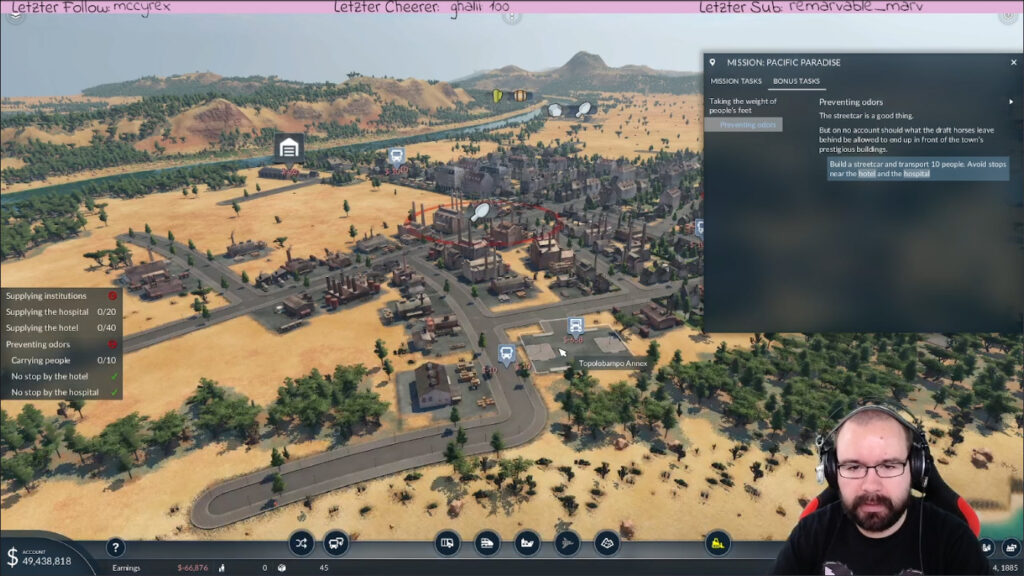
I would like to explain this with a concrete example: we had to transport oil from point A to point B with an electric train. So we built two freight yards, one at point A, one at point B, and connected them with a rail. Then an extra track next to it, where an engine shed is connected – so far, so good. We now create a new train, assign it tank wagons for the oil and the route from A to B – and it doesn’t start.
One problem with the game is that many things happen automatically, but some things don’t. What exactly is automated and what is not is distributed relatively randomly. In our example, the train should have known automatically that it could transport the oil – but it didn’t. So it went to troubleshooting, which proved to be quite extensive thanks to the lack of diagnostic tools. We fought our way through various sub-sub-sub-sub menus until we found the problem – the train had been assigned the wrong platform at the starting station.
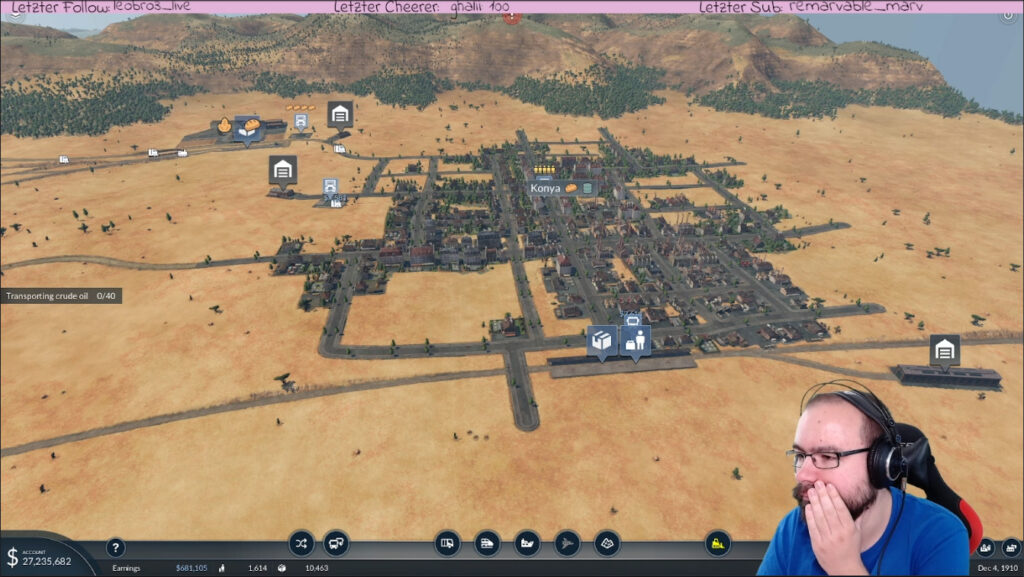
The starting station had even more goods that were picked up via a different track. Since we only select the station with the planning tool for routes, but not the platform, platform one was automatically selected – but our train could not reach it because the rails were only connected to platform two. The tool could have known that automatically (or at least told us that you can set this option at all), but it was up to us. peak of the irony: the tracks were laid to the left and right, the goods were in the middle – so there would have been no problems loading, no matter which track was selected.
So, found the correct submenu, let’s go… right? No. Still not. And we were allowed to search again until we found the problem, this time it was the electric locomotive. Because the destination station and the route were automatically supplied with overhead lines, as this happens automatically. You can change it manually, but since they don’t bother you, there was never a reason do to that. The one track that was added as track two at the starting station was not automatically electrified – the principle was the other way around there. Therefore, the railway could not start there. As usual, we had to find out for ourselves, without help.
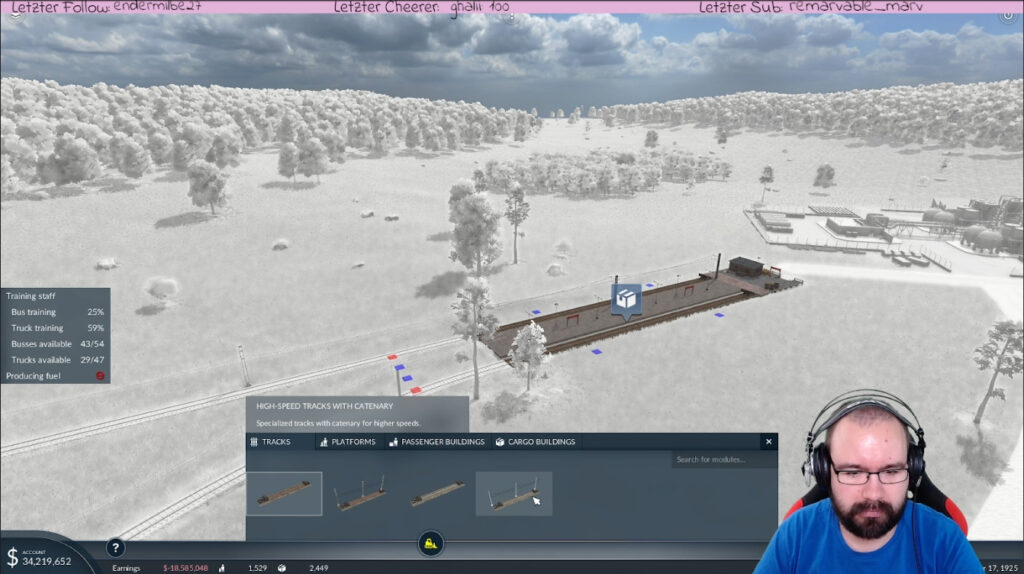
There were many more such points that just didn’t make sense, but at some points I’m also convinced that the developers just didn’t care. For example, there were several missions where you needed the cardinal direction to find a point – but there is no compass or other reference point in the entire game. True to the motto “Try it out or Google it”.
Another was the careless implementation of the units. Regardless of the selected unit, the tutorial always spoke in meters (because a PC would never be able to convert that automatically), but you could still select a unit in the options. And yes, unit, not system of units. So choose wisely whether the height of a mountain is always in miles or the distance of a city is always in feet – adaptively adjusting would be too difficult.
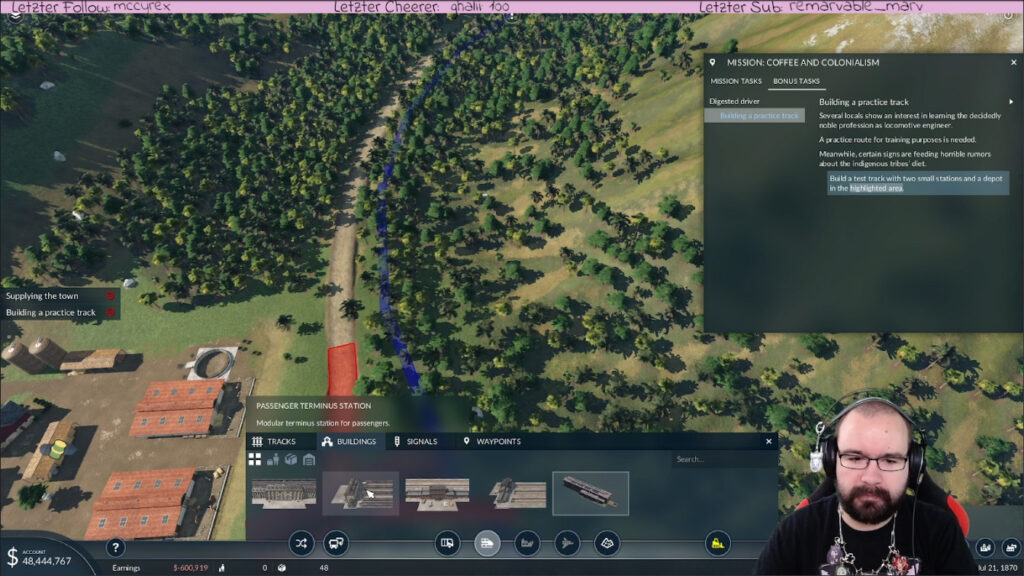
The last point in particular will make many of you shrug your shoulders. “Imperial units are worse than the metric system anyways”. I still think that if they’re already implementing it, they could at least get it right. So it was just carelessly spit out.
These were just a few examples, but there were an incredible number of points that frustrated me. Every single point in itself was just a small thing, but all of them together made me abandon the game pretty quickly. I don’t feel like guessing which option happens automatically and where I have to set something myself. Sometimes the production chains were just fundamentally wrong (which isn’t necessarily a good thing for a game about exactly that), and often it just seemed like features had been built in with no motivation whatsoever, just to advertise that those are present.
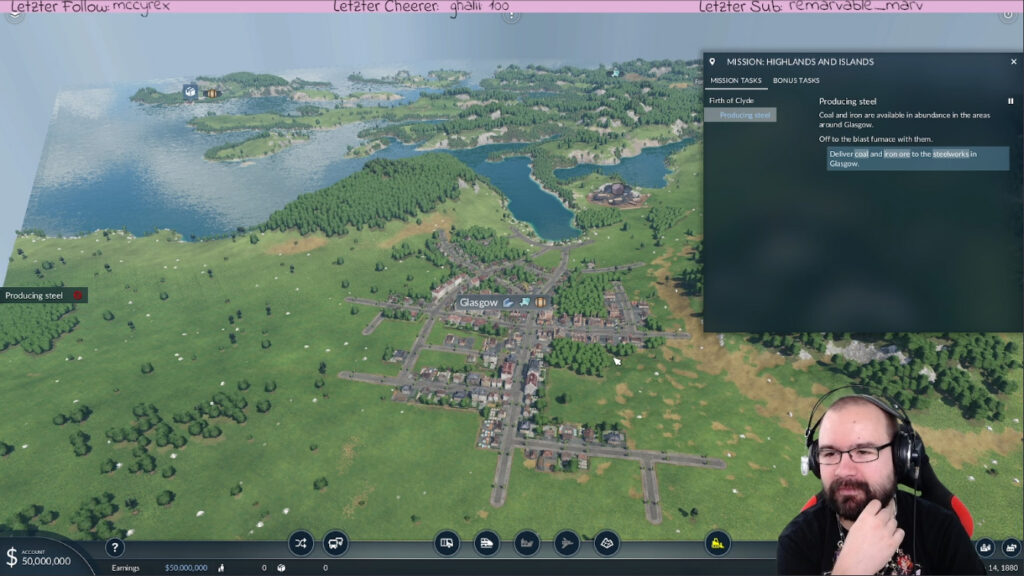
So overall I’m disappointed with the game. I found the idea exciting and the first few hours were a lot of fun – unfortunately this level could not be maintained. Therefore it does not get my recommendation.
How did you like the game? Are you a fan of it yourself, can you understand my criticism? Should I try more such games? Feel free to join the discussion on Discord!